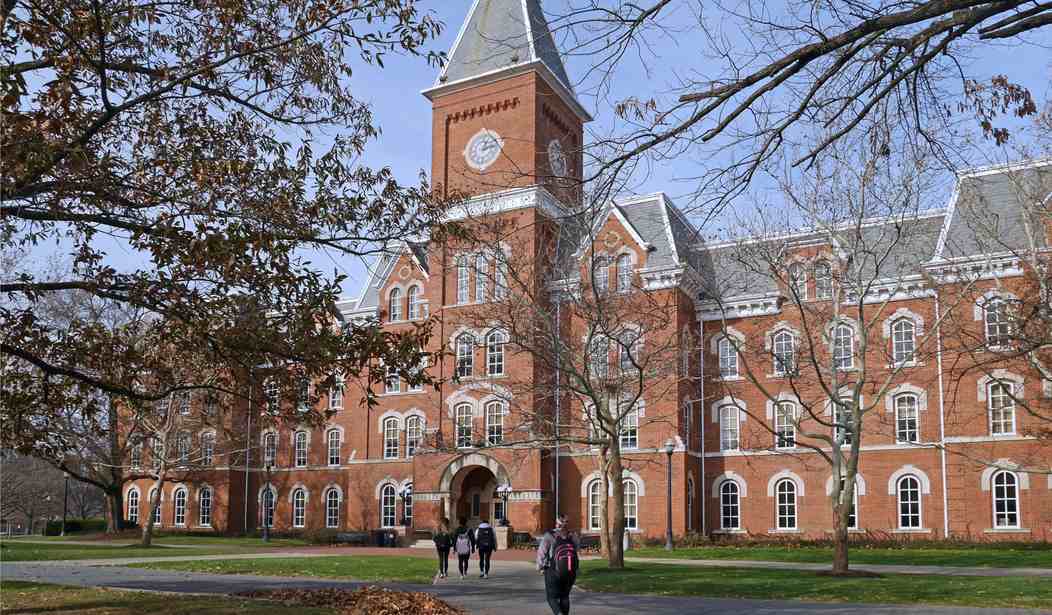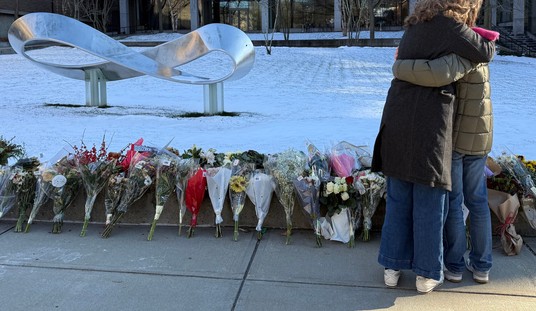There are more than ten Democrats for every one Republican among elite professors at America’s top liberal arts colleges, a new study found. Worse, Democrats outnumber Republicans by 70 to 1 in religion departments, and that wasn’t the worst disparity.
Mitchell Langbert, an associate professor of business management at Brooklyn College, examined the party affiliations of 8,688 tenure-track, Ph.D.-holding professors at 51 of the top 60 liberal arts colleges in U.S. News and World Report‘s 2017 rankings, and found that there were 10.4 times as many Democrats as Republicans. This sample proved far from complete, since 37.8 percent of professors are either not registered to vote or not registered with a specific party, but the study did show a rough litmus test of political opinion at top colleges.
“The political registration of full-time, Ph.D.-holding professors in top-tier liberal arts colleges is overwhelmingly Democratic,” Mitchell wrote in an article reporting his findings to the National Association of Scholars.
Worse, 39 percent of the colleges he surveyed had not one Republican on the faculty. The political registration in the remaining 61 percent proved slightly more than zero but nevertheless “absurdly skewed against Republican affiliation and in favor of Democratic affiliation.” At Williams College in Williamstown, Mass. — ranked number 1 by U.S. News and World Report — Democrats outnumbered Republicans by 132 to one.
“Thus, 78.2 percent of the academic departments in my sample have either zero Republicans, or so few as to make no difference,” Langbert reported.
Langbert included two military colleges, West Point and the Naval Academy, which had relatively balanced Democrat-to-Republican ratios (1.3-to-1 and 2.3-to-1, respectively). If these two colleges were removed from the sample, the overall ratio jumped from 10.4-to-1 to 12.7 Democrats for every Republican.
The disparities proved worst in specific academic departments. While Science, Technology, Engineering, and Math (STEM) fields were comparatively balanced, the Democrat slant became more pronounced in the Humanities and in interdisciplinary studies.
Democrat-to-Republican ratios proved bad but not outrageous in engineering (1.6-to-1), chemistry (5.2-to-1), economics (5.5-to-1), professional studies (5.5-to-1), mathematics (5.6-to-1), physics (6.2-to-1), computers (6.3-to-1), and political science (8.2-to-1). Other disciplines went off the deep end.
Among the Humanities, not one subject had less than 15 Democrats for every Republican. Psychology (16.8-to-1), history (17.4-to-1), philosophy (17.5-to-1), language (21.1-to-1), classics (27.3-to-1), theater (29.5-to-1), and music (32.8-to-1) did not quite reach the absurd imbalance of 40 Democrats to 1 Republican, but other disciplines did. Some science disciplines also had surprisingly high imbalances: biology (20.8-to-1), environmental science (25.3-to-1), and geoscience (27-to-1). Perhaps the influences of evolution and scientism in biology, and climate change orthodoxy in environmental and earth science explain these imbalances.
In art (40.3-to-1), sociology (43.8-to-1), and English (48.3-to-1), there were more than 40 Democrats for every Republican. As noted above, religion proved even worse, with 70 Democrats for every Republican — a surprising statistic considering the hubbub about evangelical Protestants supporting Donald Trump.
Langbert found not a single Republican to balance out the 56 Democratic professors in anthropology, and also not a single Republican to balance the 108 Democratic professors in communications.
A few colleges stood out for having more Republicans. Thomas Aquinas College, for example, has thirty-three full-time faculty, and all of them are Republican. Such colleges fell far outside the norm, however.
Langbert lamented this clear political slant. “Political homogeneity is problematic because it biases research and teaching and reduces academic credibility,” the professor warned. He cited a recent book, The Politics of Social Psychology, noting that “because of left-wing bias, psychologists are far more likely to study the character and evolution of individuals on the Right than individuals on the Left.”
These biases may be “baked in,” so to speak. As Langbert noted, “sociologists prefer not to work with fundamentalists, evangelicals, National Rifle Association members, and Republicans.”
“So pervasive is the lack of balance in academia that more than 1,000 professors and graduate students have started Heterodox Academy, an organization committed to increasing ‘viewpoint diversity’ in higher education,” he added.
America’s education system has been moving left for many decades. In 1984, only 39 percent of college professors on average described themselves as “Left,” while by 1999, that number had reached 72 percent.
While the general leftward lurch in American colleges is distressing enough, the bias in religion departments proves particularly noxious, as America’s elites seem less and less able to understand conservative religion in particular and evangelical Christianity in particular. In 2016, a New York Times editor actually acknowledged that New York and D.C. media “don’t quite get religion.” Perhaps some Republican religion professors at the nation’s top liberal arts colleges would go a long way toward addressing this problem.
Langbert argued that “the solution to viewpoint homogeneity may lie in establishing new colleges from the ground up, rather than in reforming existing ones,” because “if political homogeneity is embedded in a college culture, attempting to reform colleges by changing their cultures seems a very tall order.”
Many conservative and Christian colleges have been operating for decades, and many have recently started across the country. Perhaps these left-wing liberal arts colleges should partner with them to learn a thing or two.









Join the conversation as a VIP Member